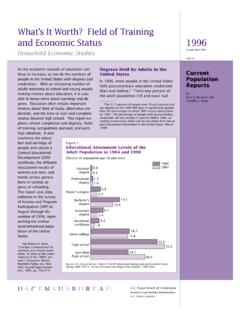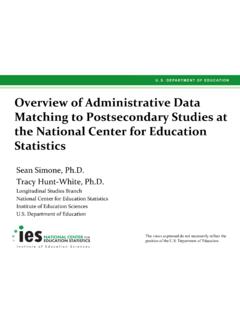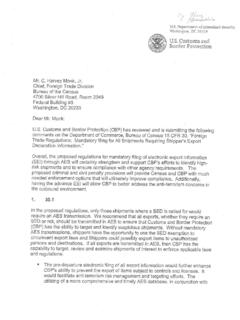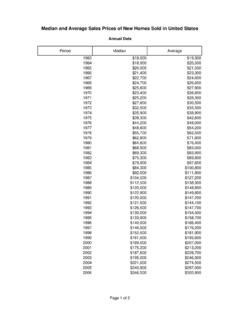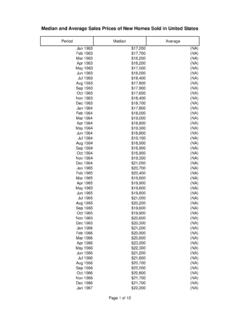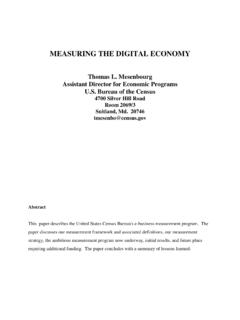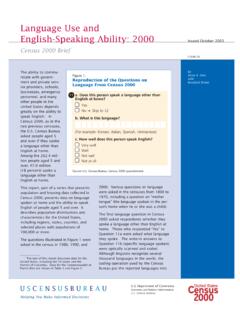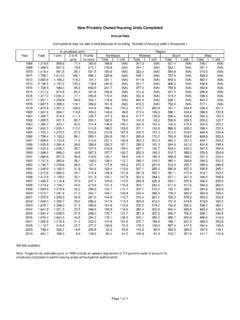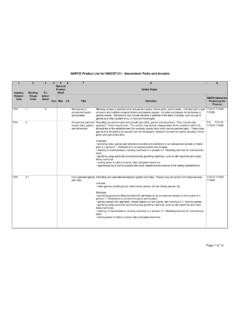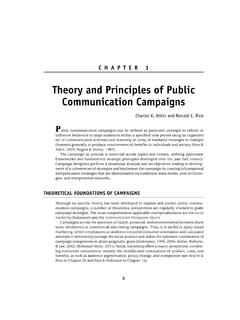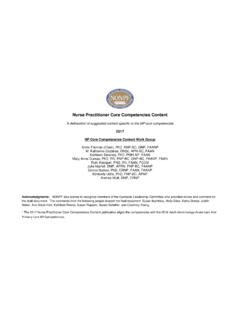Transcription of NAICS Update Process Fact Sheet - Census.gov
1 1 NAICS Update Process Fact Sheet The Office of Management and Budget s North American Industry Classification System ( NAICS ) is a system for classifying establishments (individual business locations) by type of economic activity in Canada, Mexico, and the United States. Its purposes are: (1) to facilitate the collection, tabulation, presentation, and analysis of data relating to establishments, and (2) to promote uniformity and comparability in the presentation and analysis of statistical data describing the North American economy. NAICS is used by Federal statistical agencies that collect or publish data by industry. It is also widely used by State and local agencies, trade associations, private businesses, and other organizations.
2 To ensure the relevance, accuracy, and timeliness of the classification, NAICS is reviewed every five years to determine what, if any, changes are required. The Office of Management and Budget (OMB) charged the Economic Classification Policy Committee (ECPC) with the maintenance and review of NAICS . After soliciting and considering proposals for revisions from the public, the ECPC submits recommendations to OMB, which, after further public comment, and in consultation with the ECPC, makes the ultimate decision on changes. The ECPC recognizes the costs involved when implementing industry classification revisions in statistical programs and the costs for data users when there are disruptions in the comparability of data.
3 The ECPC also recognizes the economic, policy, and statistical implications that arise when the industry classification system does not identify and account for important structural changes in the economy. Balancing the costs of change against the potential for more relevant and accurate economic statistics requires significant input from data providers, data producers, and data users. Schedule for 2022 Revision of NAICS Tentative schedule for consideration of changes to NAICS for 2022 Federal Register notice soliciting proposals: November 2019 ECPC review of proposals and trilateral negotiation: September 2020 Federal Register notice containing ECPC recommendations to OMB: October 2020 Federal Register notice containing OMB final decisions: March 2021 2022 NAICS United States Manual submitted to OMB: September 2021 2022 NAICS United States available on NAICS Web Site.
4 January 20222 Process for Submitting Change Proposals to NAICS United States All proposals for changes to NAICS should align with the basic development principles of NAICS . The four principles of NAICS are: is erected on a production-oriented conceptual framework. This means thatproducing units that use the same or similar production processes are grouped togetherin gives special attention to developing production-oriented classifications for (a)new and emerging industries, (b) service industries in general, and (c) industriesengaged in the production of advanced series continuity is maintained to the extent system strives for compatibility with the two-digit level of the InternationalStandard Industrial Classification of All Economic Activities (ISIC Rev.)
5 4) of theUnited ECPC is committed to maintaining the principles of NAICS as it develops further refinements. The ECPC plans to solicit proposals for changes to NAICS United States based on the tentative schedule listed above. Proposals will be solicited, reviewed, and analyzed. As necessary, proposals for change will be negotiated with our partners in Canada and Mexico. When this Process is complete, OMB will publish a Federal Register notice that presents the ECPC recommendations for additional public comment prior to a final determination of changes to NAICS for 2022. Proposals for changes will be evaluated using a variety of criteria. As previously mentioned, all proposals will be evaluated based on the application of the production function, their impact on comparability with Canadian and Mexican NAICS classifications, and their effect on time series continuity.
6 For any proposals that cross three-country levels of agreement, negotiations with Canada and Mexico, our partners in NAICS , will also affect the recommendations for those proposals. In addition, other criteria may influence recommendations for adoption. From a practical standpoint, industries must be of appropriate size. At the national level, this is generally not a major concern but there are a variety of statistical programs that produce industry data at the regional, State, MSA, or even county or local level. Proposed industries must include a sufficient number of establishments so that Federal agencies can publish industry data without disclosing information about the operations of individual firms.
7 The ability of government agencies to classify, collect, and publish data on the proposed basis will be taken into account. Proposed changes must be such that they can be applied by agencies within their normal processing operations. Any recommendations for change forwarded by the ECPC to the Office of Management and Budget for consideration will also take into account the cost of making the changes. These costs can be substantial and the availability of funding to make changes is a critical consideration. Proposals for change should be consistent with the production-oriented conceptual framework incorporated into the principles of NAICS . When formulating proposals, please note that an 3 industry classification system groups the economic activities of producing units, which means that the activities of similar producing units cannot be separated in the industry classification system.
8 Proposals for changes to NAICS industry classifications must be in writing and include the following information: a)Specific detail about the economic activities to be covered by the proposedindustry, especially its production processes, specialized labor skills , and any uniquematerials used. This detail should demonstrate that the proposal groupsestablishments that have similar production processes that are unique and clearlyseparable from the production processes of other )Specific indication of the relationship of the proposed industry to existing NAICSU nited States six-digit )Documentation of the size and importance of the proposed industry in the )Information about the proposed industry in Canada and Mexico, if developing proposals for changes t o NAICS , please note that there are two separate economic classification initiatives underway in the United States.
9 The North American Product Classification System (NAPCS) complements the NAICS industry system and provides an alternate way of classifying output. NAICS was developed to classify units according to their production function. NAICS results i n industries that group units undertaking similar activities using similar resources but does not necessarily group all similar products or outputs. NAPCS was developed to classify the outputs, products, or transactions of establishments, within a demand-based conceptual framework. For example, a fl u sho t ca n be provided by a doctor s office , a hospital, or a wal k-in clinic. These three units are classified to three different NAICS industries; i f data users want information about all flu shots provided, they would need to be able t o identify and aggregate the individual products coming out of the three different industries.
10 Thus, i n many cases, th e need for specific statistical data i s better addressed with product data crossing industries rather than with the creation of a new industry. This i s particularly true with NAICS , which groups establishments into industries based on their production function. Proposals for changes t o NAICS will be evaluated within the context of both the industry and product classification systems. Certain proposals may be more adequately addressed through th e identification and collection of product data. For a detailed description of the NAPCS initiative, see the April 16, 1999, Federal Register notice (64 FR 18984-18989) and other NAPCS documents available at this time, the public comment period for 2022 NAICS is closed.
